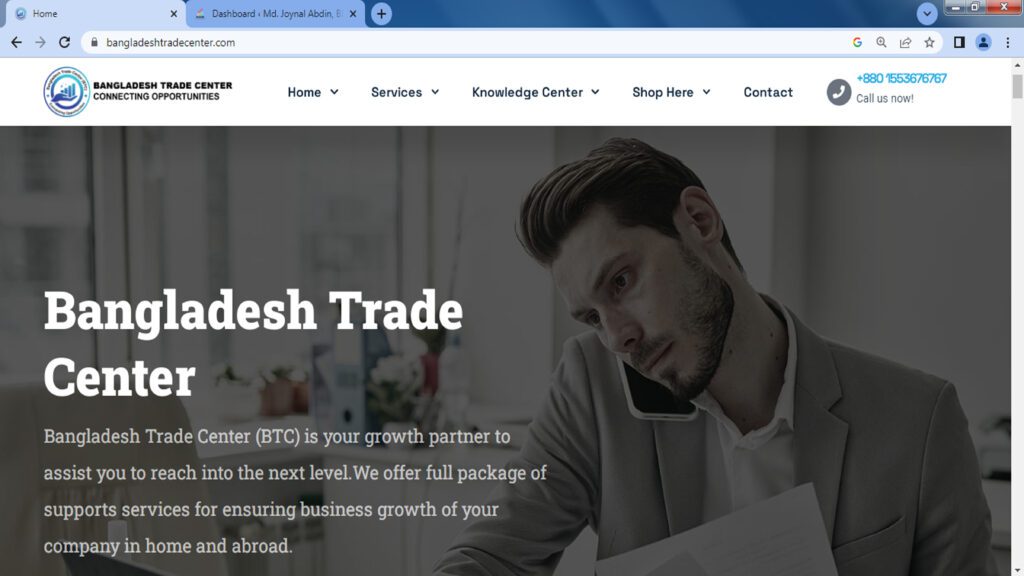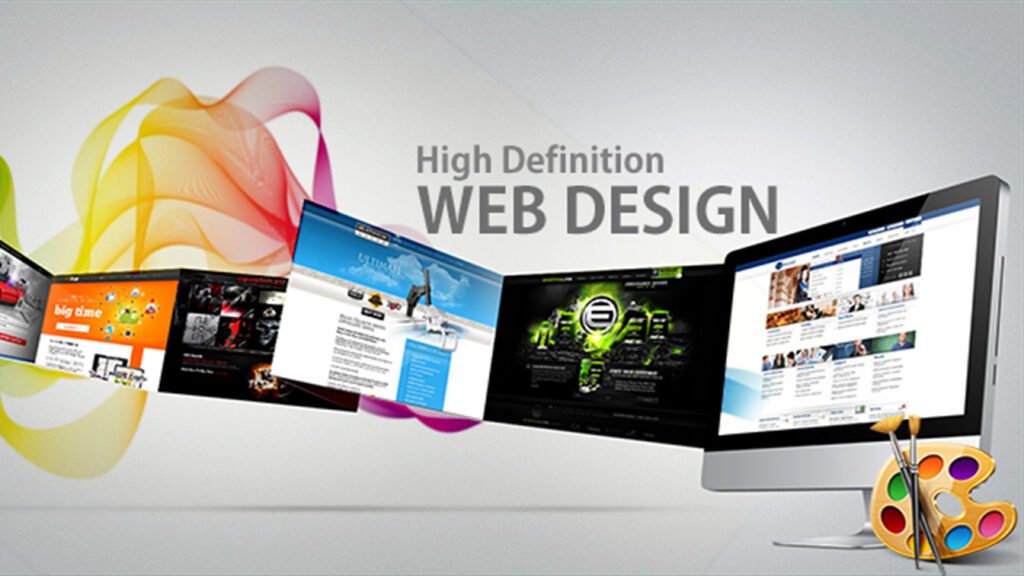Why every SMEs should have a beautiful website?
A website is a collection of related web pages, multimedia content, and files, typically hosted on a web server and accessible over the internet. It is a digital presence that represents an individual, organization, business, or a specific topic on the World Wide Web. Websites are designed to provide information, interact with users, and facilitate various online activities.
A typical website consists of web pages that are interconnected through hyperlinks. These pages can contain text, images, videos, audio, and other multimedia elements. Websites can serve a wide range of purposes, such as providing information, promoting products or services, offering online shopping, entertainment, education, social networking, and much more. [Develop your website by us]
Websites are accessed by users through web browsers like Google Chrome, Mozilla Firefox, Safari, or Internet Explorer. When a user enters the website’s address or URL (Uniform Resource Locator) in the browser’s address bar, the browser sends a request to the web server hosting the website. The server then responds by sending the requested web pages and content back to the user’s browser, which renders and displays them on their device.
Websites can be static, where the content remains fixed and unchanged until manually updated by the website owner or developer. Alternatively, they can be dynamic, with content generated and customized based on user interactions or data from databases. Dynamic websites often incorporate interactive features, user accounts, forms, search functionality, and more.
Building a website involves various technologies and skills, including web design, HTML (Hypertext Markup Language), CSS (Cascading Style Sheets), scripting languages like JavaScript or PHP, and database management. Content management systems (CMS) like WordPress, Drupal, or Joomla make it easier for non-technical users to create and manage website content without extensive coding knowledge.

Types of websites:
There are various types of websites, each designed to serve specific purposes and cater to different needs. Here are some common types of websites:
- Informational Websites: These websites primarily focus on providing information about a particular topic. They can be educational, news-based, or reference websites. Examples include encyclopedia websites, news portals, and educational resources.
- E-commerce Websites: E-commerce websites facilitate online buying and selling of products or services. They often include features such as product listings, shopping carts, secure payment gateways, and customer reviews. Popular e-commerce websites include Amazon, eBay, and Shopify-powered stores.
- Blogs and Personal Websites: Blogs are online platforms where individuals or groups share their thoughts, opinions, or expertise on specific subjects. Personal websites serve as online portfolios or digital resumes. They often include blog posts, articles, and information about the website owner or author.
- Social Networking Sites: Social networking sites allow users to connect and interact with others online. They provide features like user profiles, friend connections, messaging, and sharing content. Examples include Facebook, LinkedIn, and Twitter.
- Portfolio Websites: Portfolio websites are used by individuals, such as artists, photographers, designers, or writers, to showcase their work and talents. These websites often feature galleries, portfolios, and contact information.
- Business Websites: Business websites represent companies or organizations and serve various purposes, such as promoting products or services, providing company information, and facilitating customer interactions like (https://bangladeshtradecenter.com). They can range from small business websites to large corporate websites.
- Educational Websites: Educational websites focus on delivering educational content and resources. They can be online courses, learning platforms, or educational institutions’ websites.
- Media and Entertainment Websites: Media and entertainment websites provide news, articles, videos, music, movies, TV shows, or other forms of entertainment. Examples include streaming platforms like Netflix, music platforms like Spotify, and news websites like CNN.
- Government and Non-profit Websites: Government websites provide information, services, and resources related to governmental departments, agencies, or public initiatives. Non-profit websites aim to raise awareness, support causes, and gather donations for charitable organizations.
- Community Forums and Discussion Boards: These websites provide platforms for users to engage in discussions, ask questions, seek advice, and share information on specific topics. Examples include Reddit, Stack Exchange, and Quora.

Business Benefits of a website:
Having a website offers numerous benefits for businesses. Some of the key business benefits of having a website include:
- Increased Online Presence: A website allows businesses to establish an online presence, making them accessible to a global audience 24/7. It expands their reach beyond physical locations and enables potential customers to find and engage with them easily.
- Enhanced Credibility and Professionalism: A well-designed and informative website can enhance a business’s credibility and professionalism. It provides a platform to showcase products, services, testimonials, and contact information, instilling trust in potential customers.
- Expanded Customer Reach: With a website, businesses can reach a wider audience, including potential customers who prefer to research and purchase products or services online. It enables businesses to tap into new markets and expand their customer base.
- Cost-Effective Marketing: Websites serve as a cost-effective marketing tool compared to traditional advertising methods. They provide a platform to showcase products, offer promotions, share news and updates, and engage with customers through blogs, social media integration, and email marketing.
- Increased Sales and Revenue: A website acts as a virtual storefront, enabling businesses to showcase and sell products or services online. It facilitates online transactions, streamlines the purchasing process, and reaches customers who prefer online shopping, potentially leading to increased sales and revenue.
- Improved Customer Support: Websites can include customer support features such as FAQs, knowledge bases, live chat, or contact forms. These features enable businesses to provide timely assistance and support to customers, enhancing customer satisfaction and loyalty.
- Market Research and Analytics: Websites provide valuable insights into customer behavior, preferences, and interests through web analytics tools. This data can be used for market research, identifying customer trends, optimizing marketing strategies, and improving products or services based on customer feedback.
- Competitive Advantage: In today’s digital age, having a website is essential for businesses to remain competitive. Without an online presence, businesses risk losing potential customers to competitors who have established an online presence and are easily discoverable.
- Business Growth and Expansion: A website can be a catalyst for business growth and expansion. It opens up opportunities to explore new markets, attract partnerships or investors, and expand the business’s reach locally or globally.
- Improved Communication and Engagement: Websites provide a platform for businesses to communicate and engage with customers effectively. They can offer contact forms, feedback mechanisms, social media integration, and interactive features to encourage customer interaction and feedback.

Cost of making and maintenance of a website?
The cost of making and maintaining a website can vary depending on various factors such as the complexity of the website, its features, the scale of the project, and the chosen approach. Here are some cost considerations to keep in mind:
- Website Development: The cost of website development can range from a few hundred dollars to several thousand or more, depending on factors like the design complexity, functionality requirements, customization, and the expertise of the developer or development team. Custom website development tends to be more expensive than using pre-designed templates or content management systems (CMS) like WordPress.
- Design and Graphic Elements: Designing a visually appealing and user-friendly website may require the services of a professional web designer. The cost can vary depending on the designer’s experience, complexity of the design, number of pages, and the need for custom graphics, logos, or branding elements.
- Domain Name: A domain name is the web address of your website (e.g., https://mdjoynalabdin.com). The cost of a domain name varies depending on factors such as the domain extension (.com, .org, .net, etc.) and the popularity of the chosen domain name. Generally, domain names can be purchased for an annual fee ranging from a few dollars to a few hundred dollars.
- Web Hosting: Web hosting is the service that stores your website files and makes them accessible online. The cost of web hosting depends on factors such as the hosting provider, the hosting package features, storage, bandwidth, security, and the level of technical support. It can range from a few dollars per month for basic shared hosting to several hundred dollars per month for dedicated or cloud hosting.
- Content Management System (CMS): If you choose to use a CMS like WordPress, Drupal, or Joomla, the CMS itself is usually free to use. However, you may incur costs for premium themes, plugins, or extensions that add additional functionality to your website.
- Maintenance and Updates: Websites require ongoing maintenance to ensure they remain secure, functional, and up-to-date. This may include tasks such as software updates, security patches, content updates, regular backups, and technical support. Maintenance costs can vary depending on the complexity of the website and the level of support needed. Some businesses choose to handle maintenance in-house, while others outsource it to web development agencies or professionals.
Finally we can state that, a website is an essential tool for businesses of all sizes and industries. It enables you to establish an online presence, build credibility, reach customers globally, increase sales, and stay competitive in the digital marketplace.
Developing Bangladesh Bangladesh Trade Center To know more, click here!


